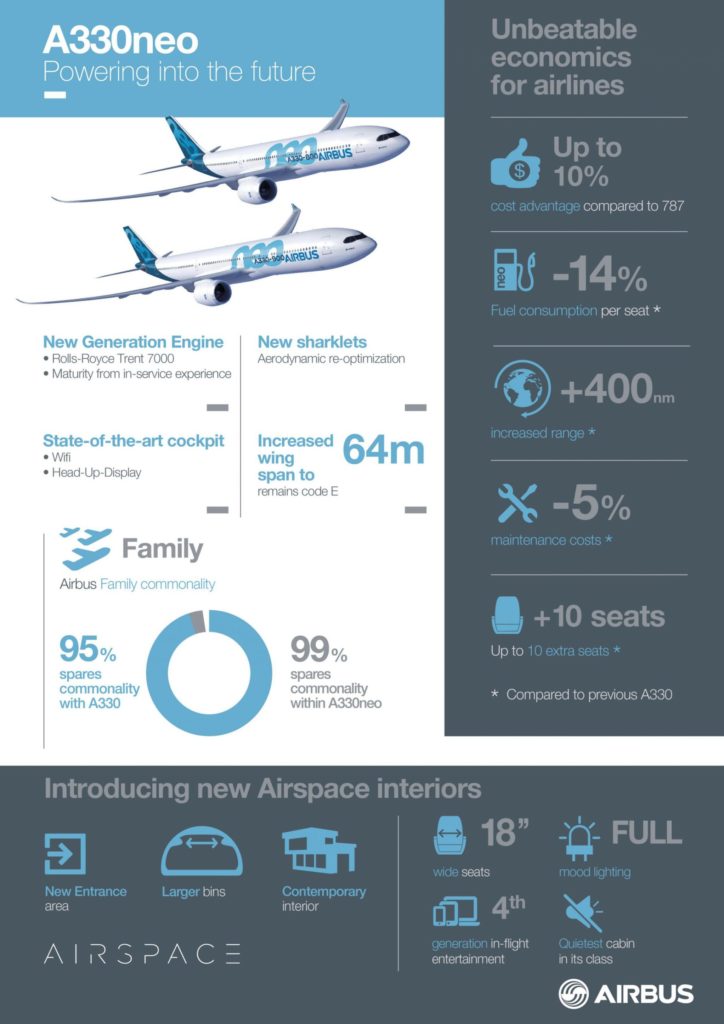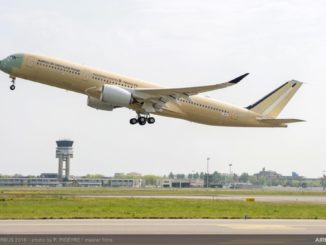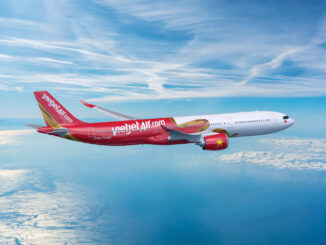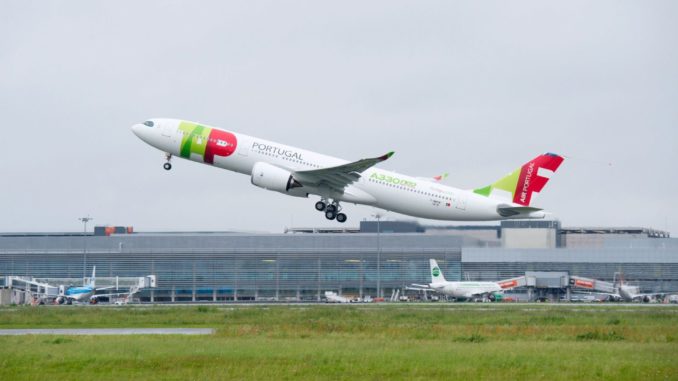
Airbus delivered the 1500th Airbus A330 airliner on the 21st September to US Airline Delta (DL/DAL) marking the latest milestone in this pioneering and hugely popular product line.
In this article, we look back at the beginnings of the A330 and its 2014 reboot.
A300 Replacement
The Airbus A330 was designed to replace the ageing A300 airliner, the worlds first widebody powered by just two engines but it was to utilise the technological advancements from Airbus’ single aisle family, the A320.
The A330-300 (now known as the current engine option or ceo) first flew 1992 and immediately pioneered long haul travel on twin-engine airliners.
Its fly-by-wire system made immensely safe and its ability to fly efficiently on short, medium and long-haul routes made it popular with airlines.
The A330-300 not only had more seats than the A300 it replaced, but it also had a range of 4000 nautical miles with a maximum take-off weight of 212 tonnes. The range was also increased to 5000nm as it matured.
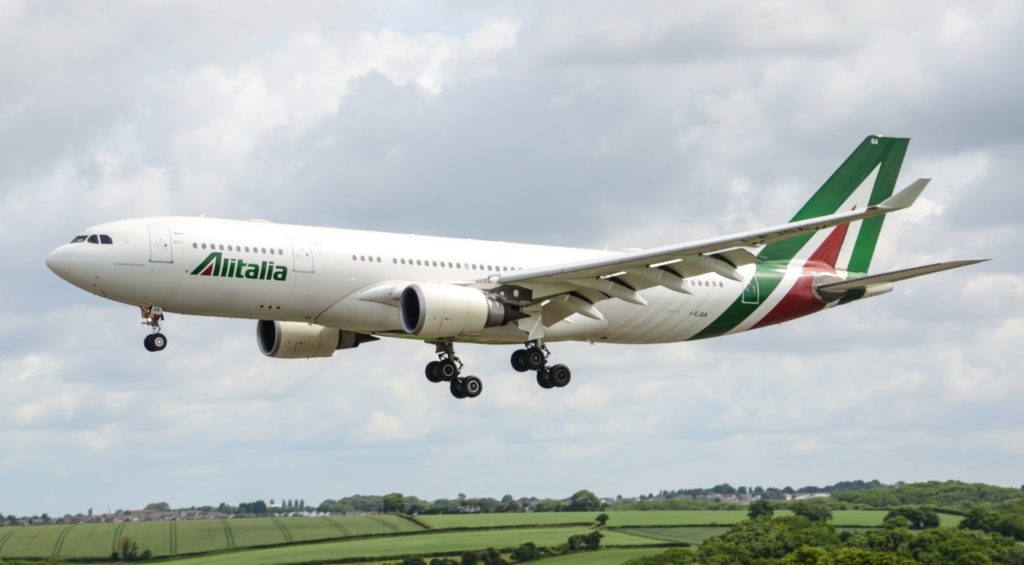
This helped it compete directly with three of Boeing’s aircraft. The 767, 777-200 and later, the 787 Dreamliner.
The type entered service in 1994 with Air Inter and shortly afterwards, launched a smaller A330-200 aircraft with a range of 6200nm.
Like most Airbus aircraft the wings were made at Airbus’ UK wing-making facility at Broughton, North Wales and they then came together with the fuselage sections and other parts at Airbus A330 final assembly line in Toulouse.
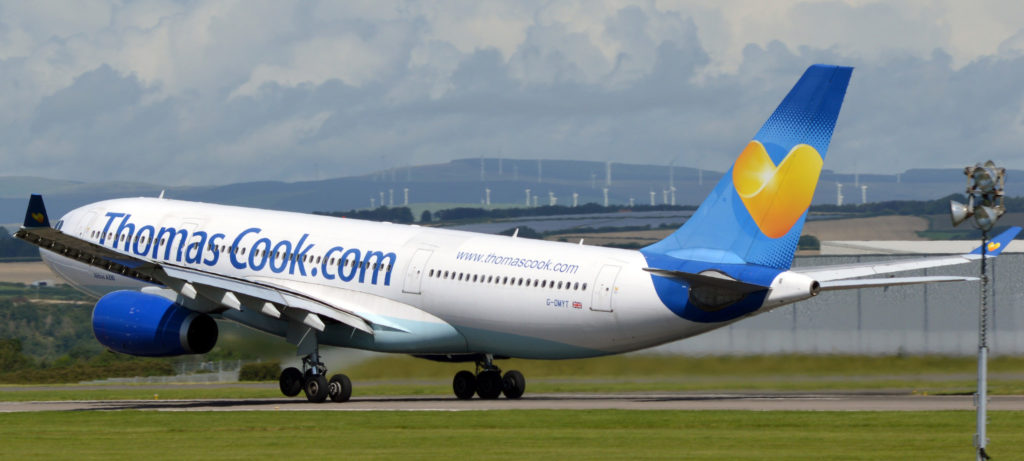
789 A330-300 have been ordered since launch with 745 currently in service. The A330-200 attached 665 orders of which 619 aircraft are in service.
New Engine Option
The decision to re-engine the A330 came about in 2014 after Delta airlines expressed significant interest in the option to replace it’s Boeing 767’s.
Delta was already an A330 operator and a more efficient version made sense not only for them but for many other A330 operators too.
It was decided that Airbus would develop two types, the A330-800neo and A330-900neo.
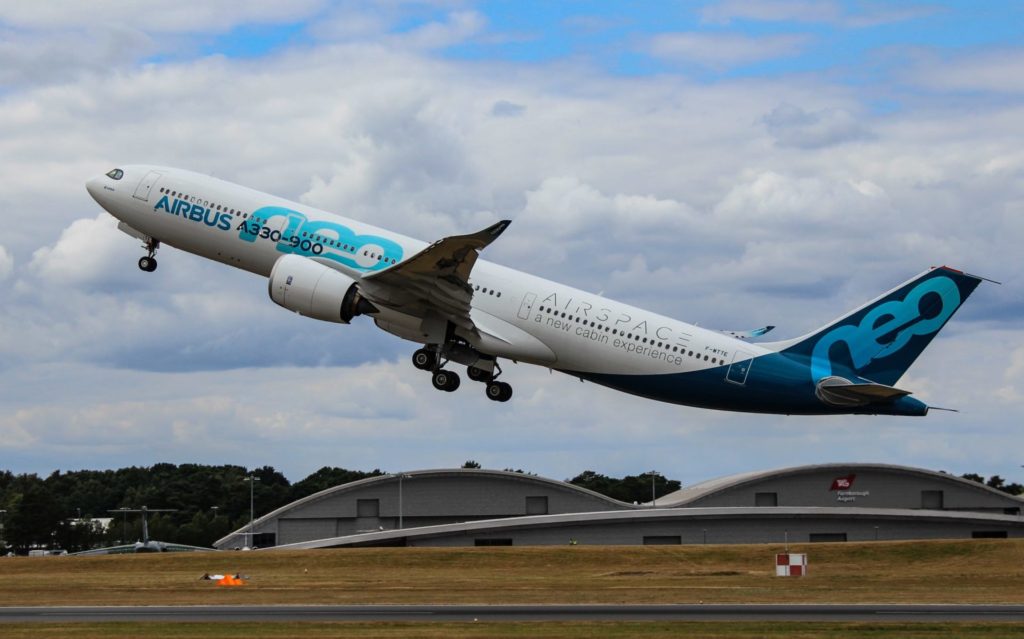
The A330-900neo was the first to fly in 2017 with improvements including a redesigned wing, cabin enhancements and of course, efficient Rolls-Royce Trent 7000 engines which combined to give a 25% fuel reduction compared the A330ceo.
Capable of carrying up to 460 passengers a distance of 7,200nm the -900neo proved popular attracting 318 orders to date with 49 delivered.
It entered service in 2018 with TAP Air Portugal as the launch customer.
The smaller A330-800neo hasn’t proved quite as popular as yet attracting just 14 orders since 2016.
Ironically, the A330neo sounded the death knell for the A350-800XWB, the planned smaller version of the hugely popular A350XWB series, as it would have been a similar size to the A330neo.
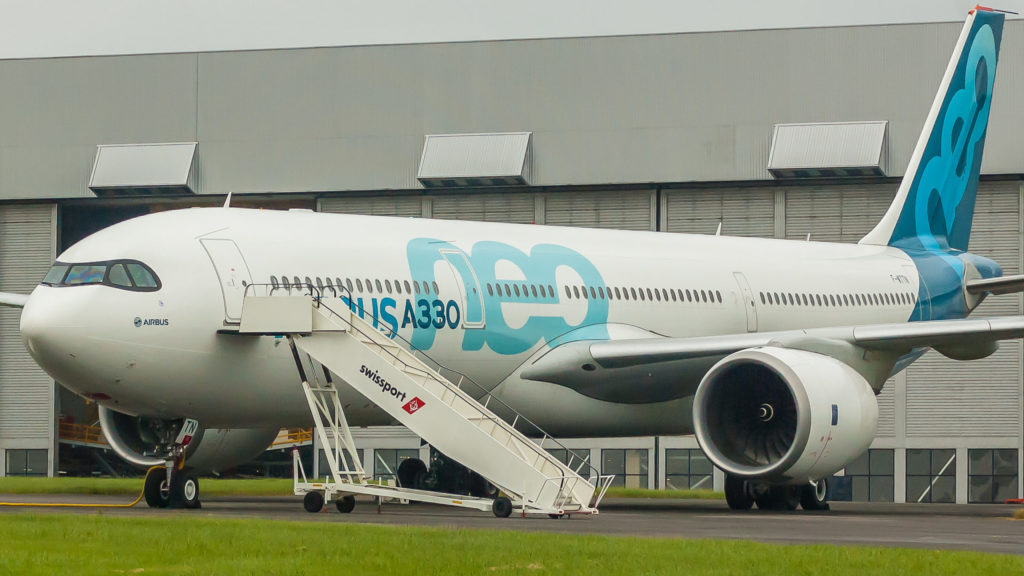
Delta Airlines is now the largest operator of the A330neo but Turkish Airlines wears the crown of the worlds largest A330 Operator.
The Future
Airbus is continuing to develop the Airbus A330 and even now is designing enhancements to to futher increase effeciency.
The type continues to be the benchmark for versatility provides a low-risk widebody solution for every type of operator carrying from 230 to 460 passengers, capable of operating on routes from 20 minutes to over 17 hours, and Airbus says it does all this “with over 99% reliability”.
